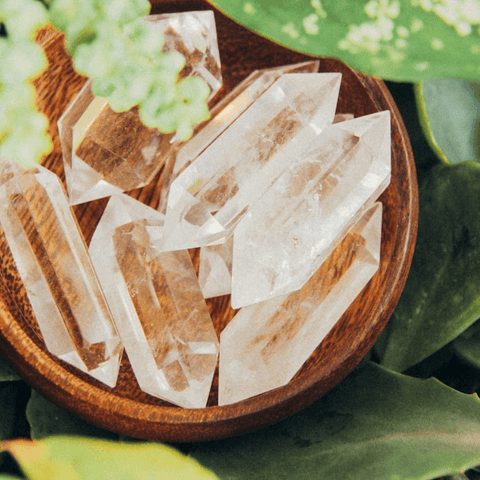Whether you have a large collection of houseplants or you are just starting to explore your green thumb, houseplant pests are something you will have to deal with, unfortunately. We know—it’s not what you wanted to hear, but the good news is that you can take measures to prevent pests and some tried and true ways to eliminate them.
The most common indoor plant pests include fungus gnats, spider mites, aphids, mealy bugs, scales, and thrips. A houseplant can get pests when you bring a new plant home, bring a plant indoors from outside, through open windows or doors, from a flower arrangement or bouquet, or other sources. When plants are stressed or neglected, insect pests may become a severe problem quickly. The best prevention is frequent cleaning and inspecting leaves and close observation of the health of your houseplants.

Fungus Gnats
These are very tiny, dark gnats/flies that develop in moist potting soil; larvae feed on root hairs and fungus in the soil and emerge as flying adults every 30 days.
Signs: Tiny gnats flying around soil and/or plant.
Control: Allow the soil to dry out and use sticky gnat traps, sprinkle Diatomaceous earth on top of the soil to kill emerging adults, or treat with Mosquito Bits (Bti) by layering on top of the soil or soaking in water. In extreme cases, remove as much soil as possible and repot it into fresh, well-draining potting soil.
Tip: Fungus gnats are common after repotting if watering is not adjusted.

Spider Mites
Though not “true” spiders, these insects are tiny (about 1 mm in size, smaller than the period following this sentence). Adult mites reproduce quickly and usually lay eggs on the undersides of leaves near the stem.
Signs: Small red or brown dots on leaves, dull or discolored leaves, or a fine webbing that may make the plant appear dusty.
Control: Prevention is best since they can be difficult to control; keep plant foliage clean and dust-free by wiping it every two weeks with water or neem oil. Isolate affected plant(s) and spray thoroughly with neem oil or insecticidal soap every ten days until all signs of pests are gone. Prune off the most infested plant parts if possible. In severe cases, predatory mites can be purchased from beneficial insect suppliers and released to hunt and kill the spider mites in homes or greenhouses. The predators die off once their food supply is gone.
Tip: Plants in the hot sun tend to get more mites than low-light plants. Certain species are more likely to have spider mites than others (croton, alocasia, bird of paradise, citrus, cast iron plant, palms, cordyline/ti plants, hibiscus, marijuana).

Aphids
A very common pest on outdoor plants, aphids can be found in various colors, including green, black, brown, or yellow. They are small and can often be overlooked once population numbers are large. They suck on plant sap and are usually found on new growth, stems, and flower buds.
Signs: Curling or crinkly leaves and damaged flower buds; tiny white exoskeletons are left behind as the insects grow. Shiny, sticky substance on foliage is caused by their excrement.
Control: Isolate and trim off the most affected leaves. Take the plant outside and gently spray it with water to kill as many bugs as possible; treat it with insecticidal soap or neem oil once the plant is dry.
Tip: Always test a small, lower leaf with an intended product to be sure it won’t discolor or damage foliage. Some plants with fuzzy leaves, like African violets, or chalky-blue coloration, such as echeveria, may show discoloration from neem oil.

Mealybugs resembling small bits of cotton or white fuzz are destructive, sucking insect pests.
Signs: Spots on leaves, yellow leaves, leaf drops, weak stems, and slowed growth; their excrement causes shiny, sticky substances on foliage. Females can lay over 500 eggs over two weeks; young mealybugs are the most vulnerable to sprays and are easiest to control when immature.
Control: Isolate and treat with insecticidal soap or neem oil; use a cotton swab or Q-tip dipped in alcohol to dab directly onto pests for hand removal. Use sticky yellow traps to catch during the crawling stage.
Tip: Cactus and succulents (Jade) are highly prone to mealy bugs, as well as citrus, hoya, pothos, philodendrons, ferns, ficus, palms, and dracaena.

Scale
This is one of the most common pests on houseplants, especially citrus, ficus, Schefflera, palms, and birds of paradise. Difficult to diagnose for the beginner, scale does not look like insects; they move very slowly as they suck the sap out of plant tissue. Instead, they appear like raised, brown bumps commonly found along plant stems and on leaf surfaces or undersides near the mid-vein; they can be gently scratched off with your fingernail.





Comments (0)
There are no comments for this article. Be the first one to leave a message!